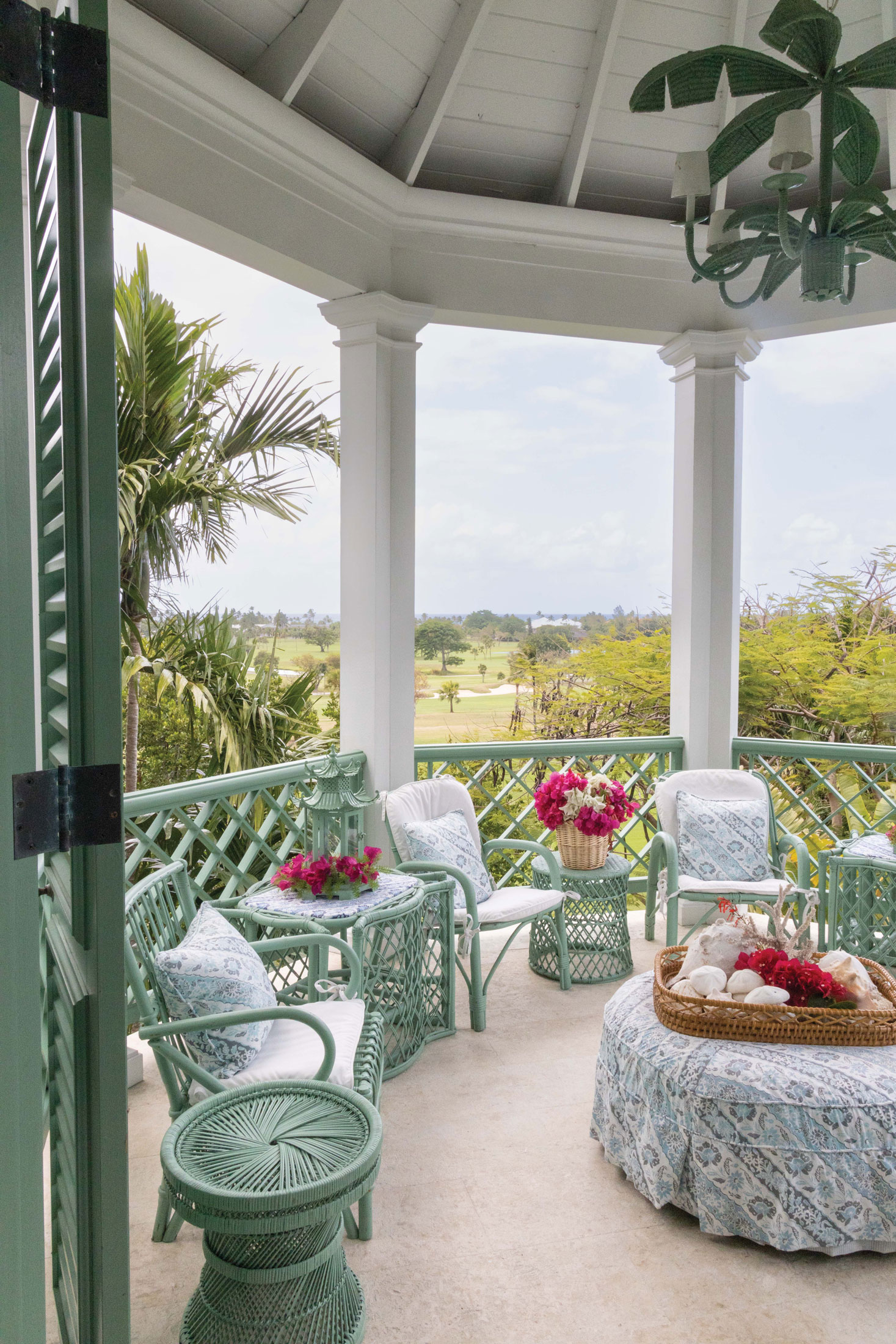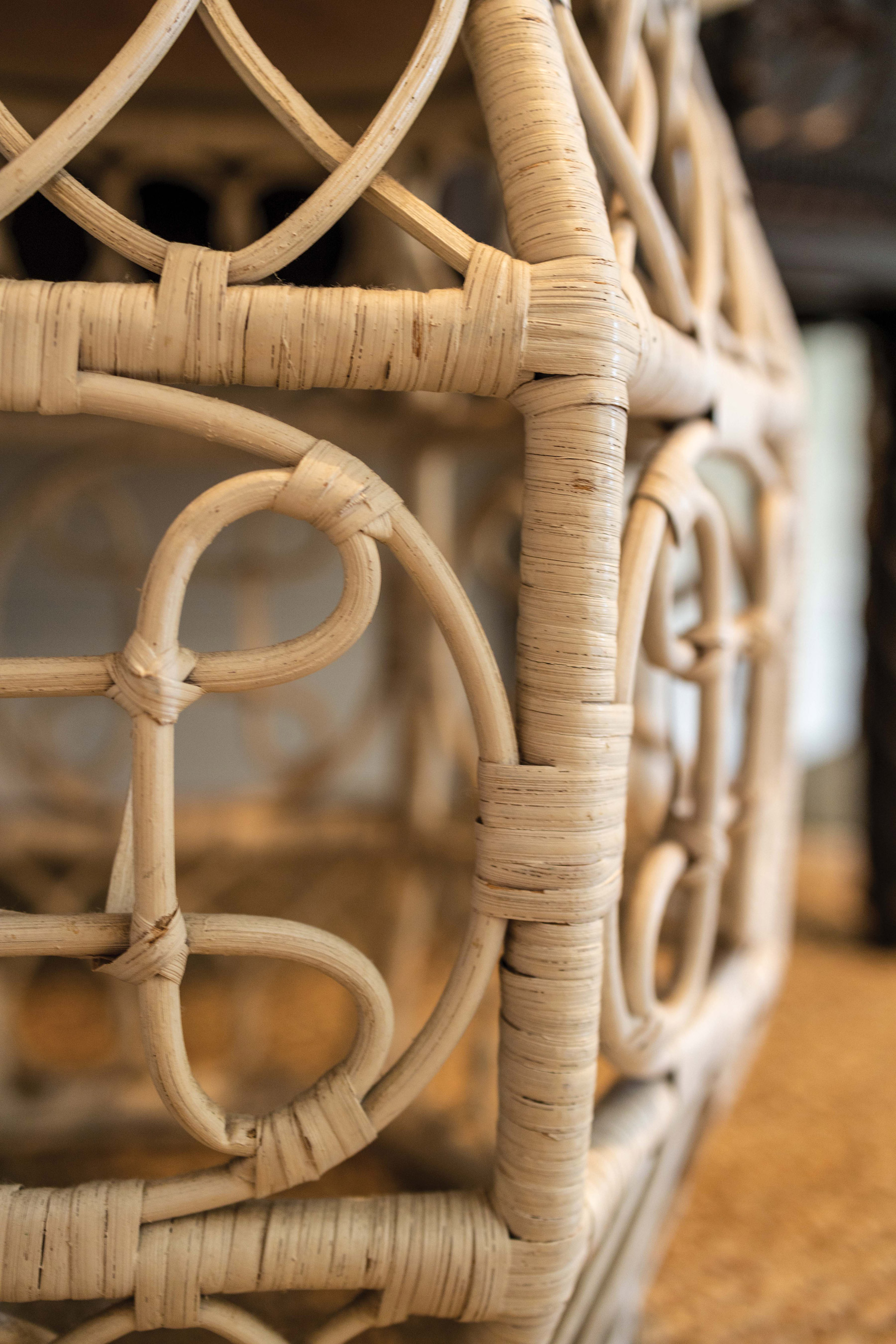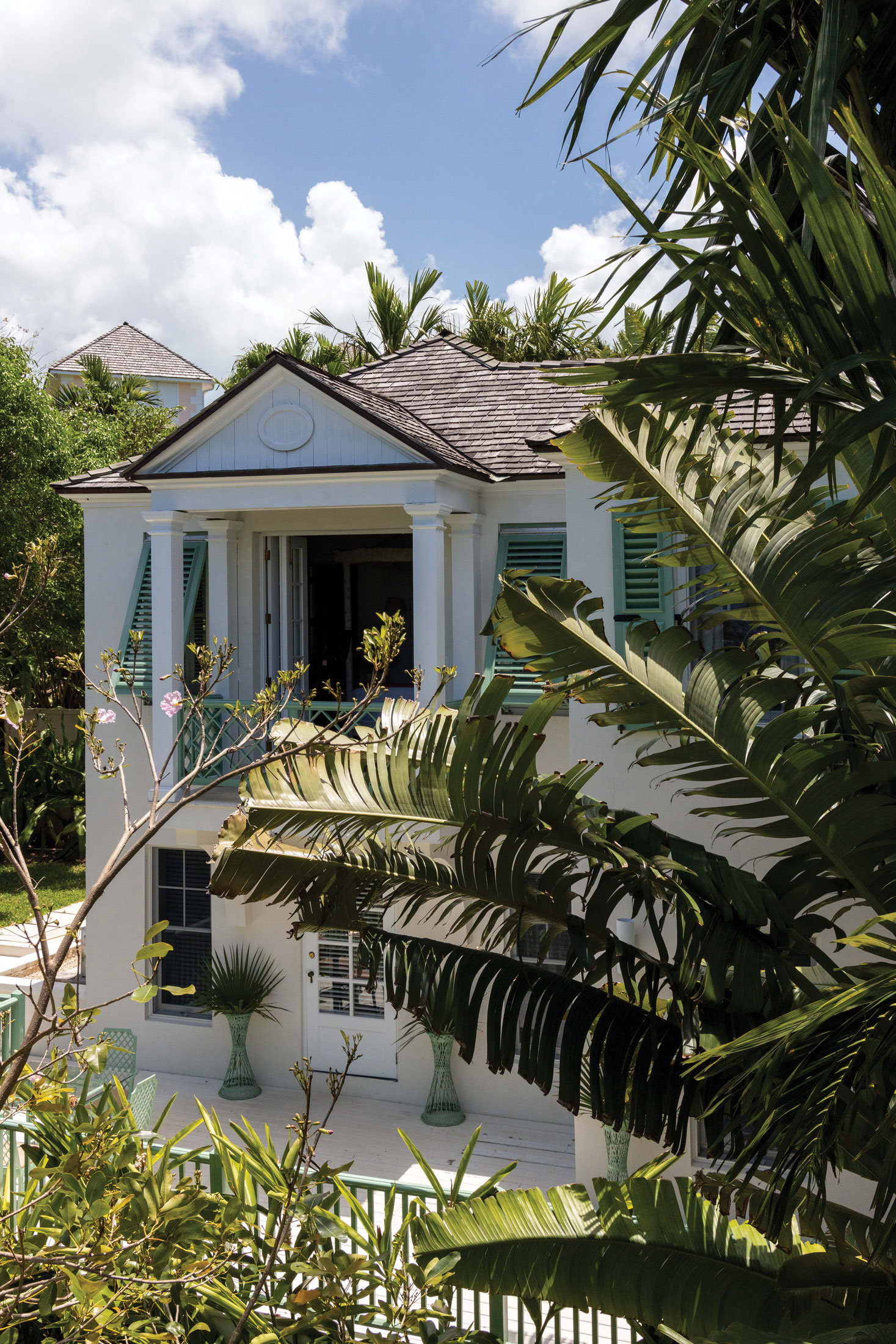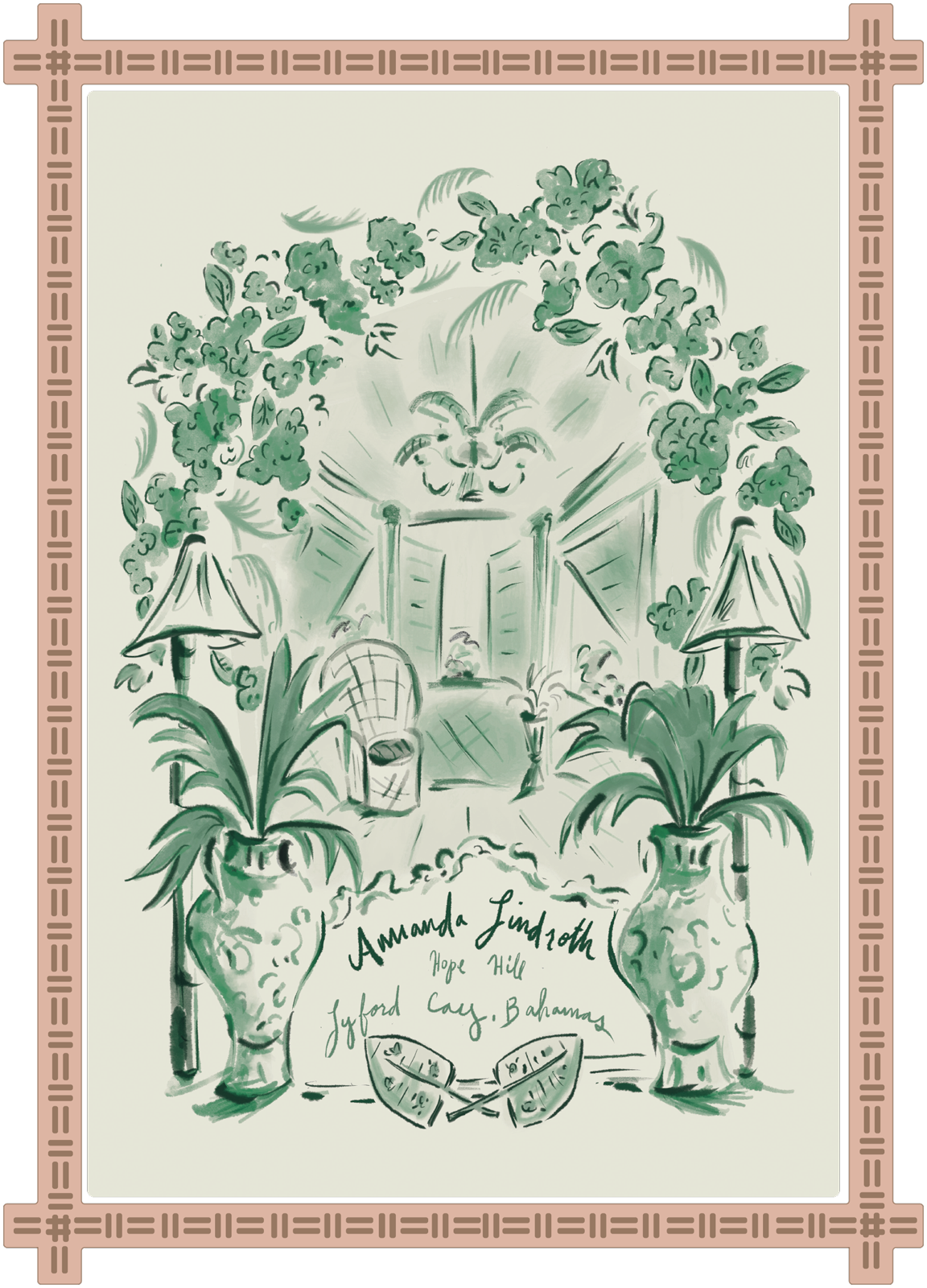Amanda, an interior designer with an international roster of clients, has become synonymous with Hope Hill and the understatedly elegant island life she and her late husband, Orjan, created there. But more than any single residence, more than any house (and she has lived in and breathed life into more than a few local gems), it’s Lyford Cay, and the Bahamas, more broadly, that Amanda calls home.
As a girl growing up in Southern Florida, Amanda fell in love with the Bahamas early on, first as a visitor, later as a part-time resident and eventually as a local fixture whose retail endeavors, design firm and various preservation-minded projects cemented her as an expat with an abiding presence and investment in the culture and community.
“This is my home,” Amanda says from her open-air living room, where she sits beneath paintings by Bahamian masters and other artists whose work spans from the 1880s to 1970s. Hope Hill is a treasure trove of collections and mini-collections, from shell art to folk portraiture to Asian ceramic pagodas and tulipieres to art and architecture books to sailors’ valentines. But the crown jewel in her cache, both personally and professionally, is wood, specifically tropical wood.
From wicker to rattan to straw to reeds to bamboo, Amanda has amassed an enormous archive of furniture, decorative objects, souvenirs, accessories, baskets, artwork, tableware and more —all woven from material native, or historically relevant, to this island paradise.
There are wicker animals fashioned as stools by the pool, rattan bar carts and sectional sofas that have inspired the silhouettes now offered through her eponymous collection of housewares. Plus there are baskets woven in the patterns unique to Lyford and the surrounding areas, as well as hats in various styles suspended from a bamboo hall tree whose French provenance recalls early aesthetic elements that become part of Bahamian style and culture.
These traditional uses of tropical wood are more than decorative to Amanda — they are part of this place, inherent to this island identity, and she’s committed to preserving that. Amanda’s knowledge of Lyford Cay and the Bahamas permeates her conversations with local craftsmen and her support of artisans working to maintain these endangered Bahamian styles of weaving through the Straw Shack, a woven-oriented trade collective founded by one of her firm’s designers, Celine Lotmore Jones.
Amanda can wax long about the origins of a certain rattan bistro chair, the history of the Lyford’s rope-bound buoys or the best place for a panoramic view of the island from the locals’ perspective.
And, yes, that knowledge and passion comes from the kind of appreciation an outsider brings to an adopted homeland, but it also springs forth from her love of design and its ability to impact its surroundings — be it the Messel green wash on a wooden shutter, or the way that an insight into the quality of wood itself makes the difference between loving a place and living in it most fully.








